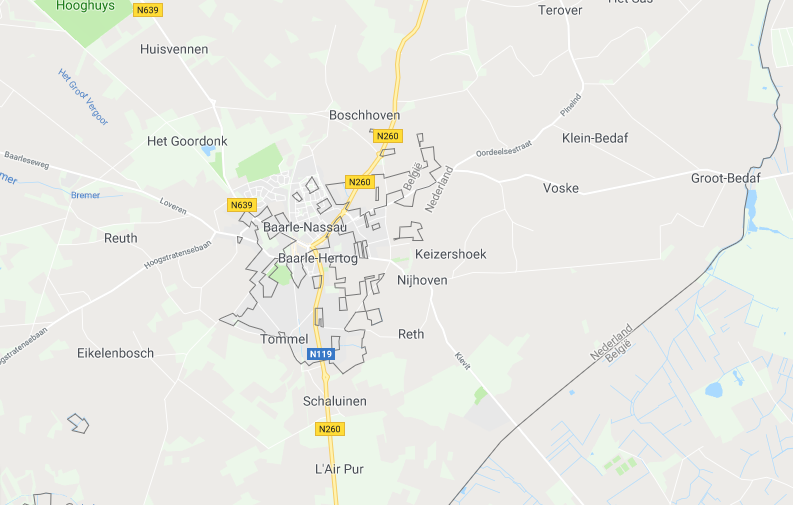
If you like crazy borders, useless trivia or simply strange places, then you’ll love the unassuming towns of Baarle-Hertog and Baarle-Nassau. Located in Belgium (Hertog) and the Netherlands (Nassau), these towns must be one of the most fascinating places in Europe.
So just what is so special about Baarle-Hertog and Baarle-Nassau? Take a look at the towns on Google maps and you might get an idea…
The borders of Baarle-Hertog and Baarle-Nassau
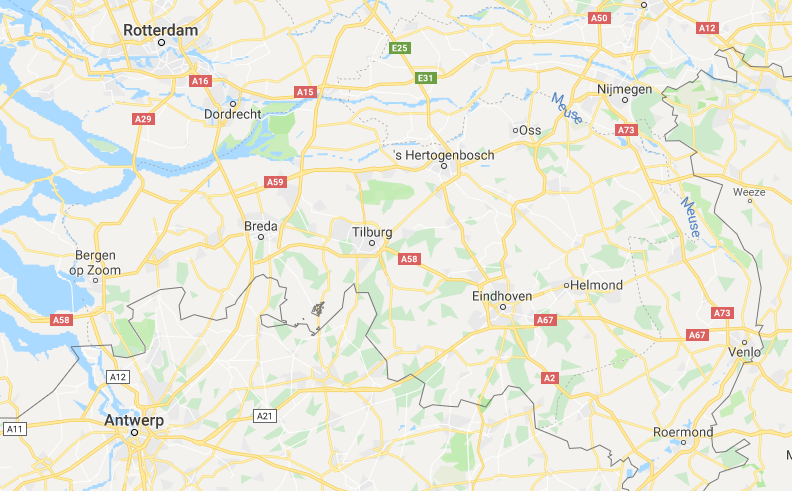
Spotted it yet?

Look a bit closer…
That’s right – the borders in this area are an absolute mess, meaning that The Netherlands and Belgium essentially share a town.
I spotted this anomaly on Google maps years ago and so when a couple of friends and I decided to do a road trip from London to my then-home town of Dusseldorf, I knew I wanted to stop off and explore Baarle.
The history of the borders of Baarle-Hertog and Baarle-Nassau
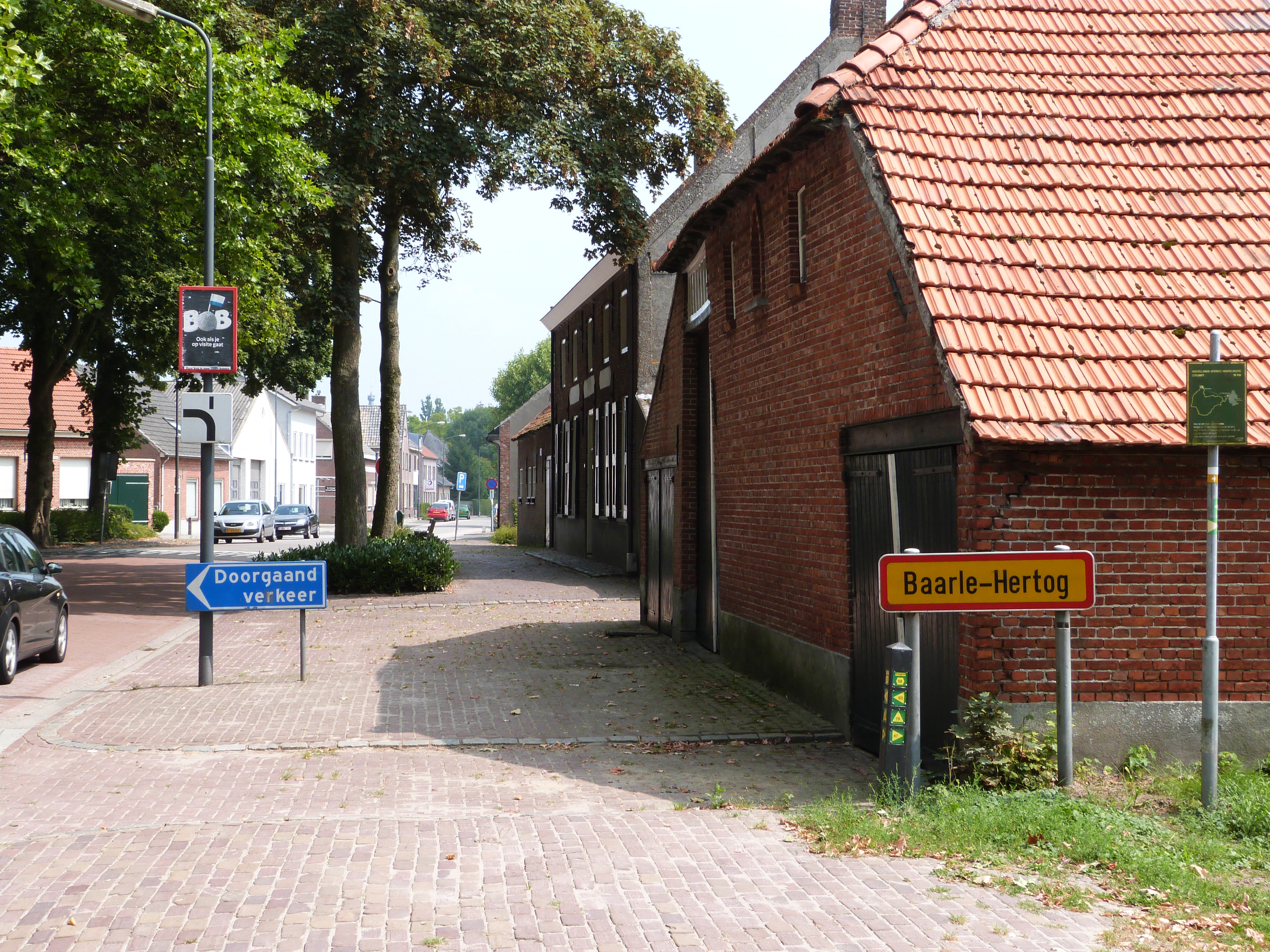
Welcome to Baarle-Hertog
On the face of it, the Belgian town of Baarle-Hertog is a just Belgian exclave in the Netherlands, meaning it’s basically a little slice of Belgium located 5km away from the rest of the country.
So far, so simple.
But somewhere around the end of the 12th century, the Belgian Duke (or ‘Hertog’) who owned the land, started giving parts of the area to the Dutch counts of Nassau.
Still with me?
But instead of giving away logical chunks of his area, he seemingly gave away very random plots of land. This created Dutch enclaves within Belgian exclaves, meaning parts of the Netherlands inside parts of Belgium that were inside the Netherlands.
Getting a bit tricky now…
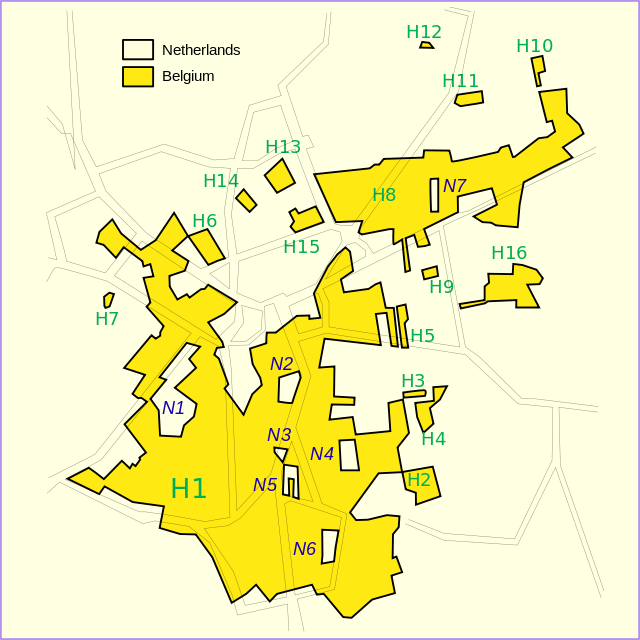
The Dutch-Belgian border
Of course, back in the day, these plots of lands were mostly agricultural so it was a lot like fields belonging to different farmers. In addition, the Dutch speaking areas of Belgium were often ruled together with the Netherlands, meaning that the different areas didn’t represent different countries until Belgium’s borders were officially defined.
This happened with the Treaty of Maastricht in 1843, which officially put the two territories in different countries: Baarle-Hertog in Belgium and Baarle-Nassau in the Netherlands.
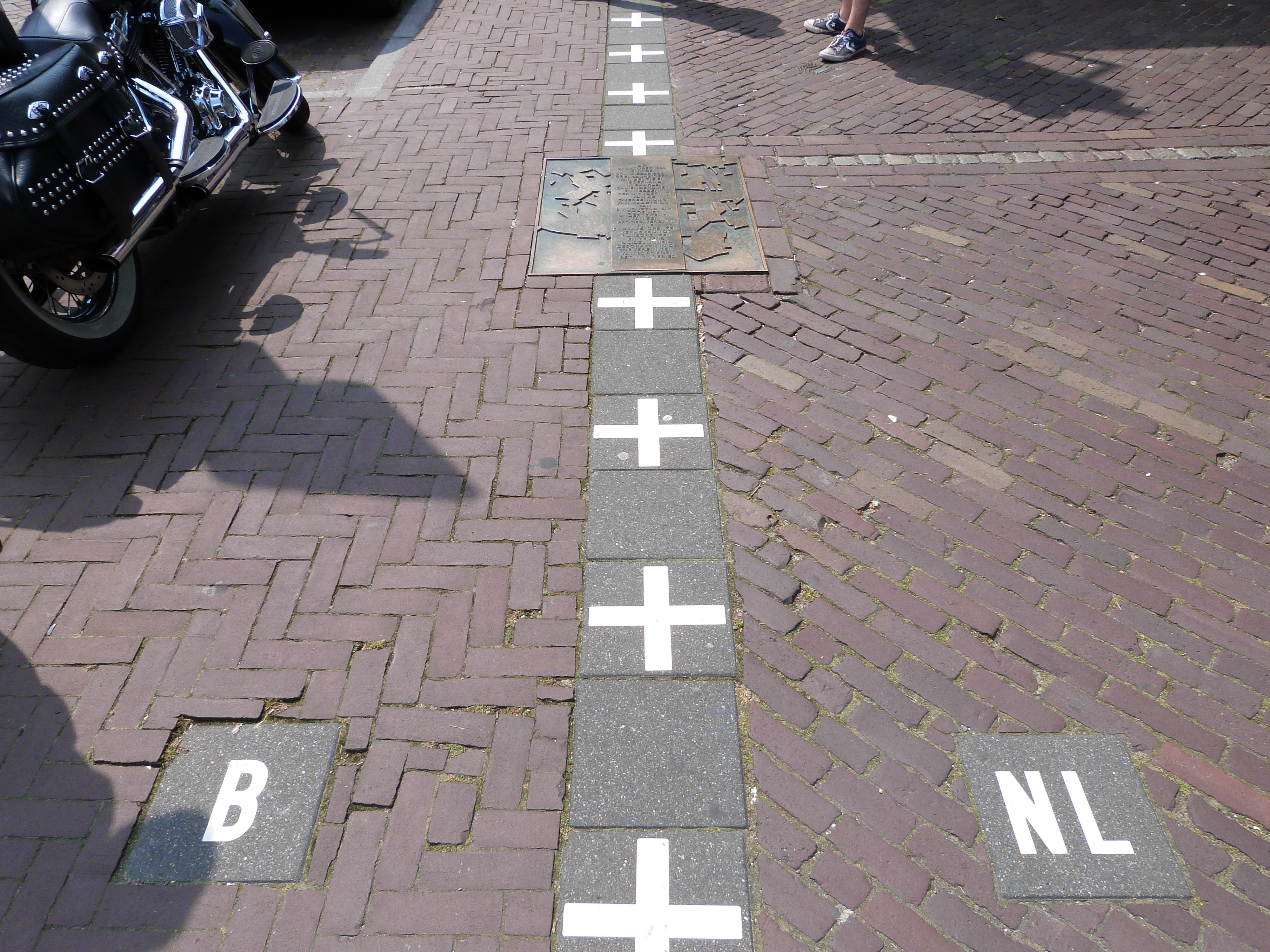
A typical border marking
Over time, more and more people came and the settlement grew, with houses and roads being built around – and sometimes through – the different territories.
Sort of logical – right?
Yet the borders stayed the same. This meant that parts of the same road would be in the Netherlands and the rest would be in Belgium. Which meant that neighbouring houses on the same street could actually be in different countries.
Read more: 6 of the strangest places in Europe
Living in Baarle-Hertog and Baarle-Nassau: the present day
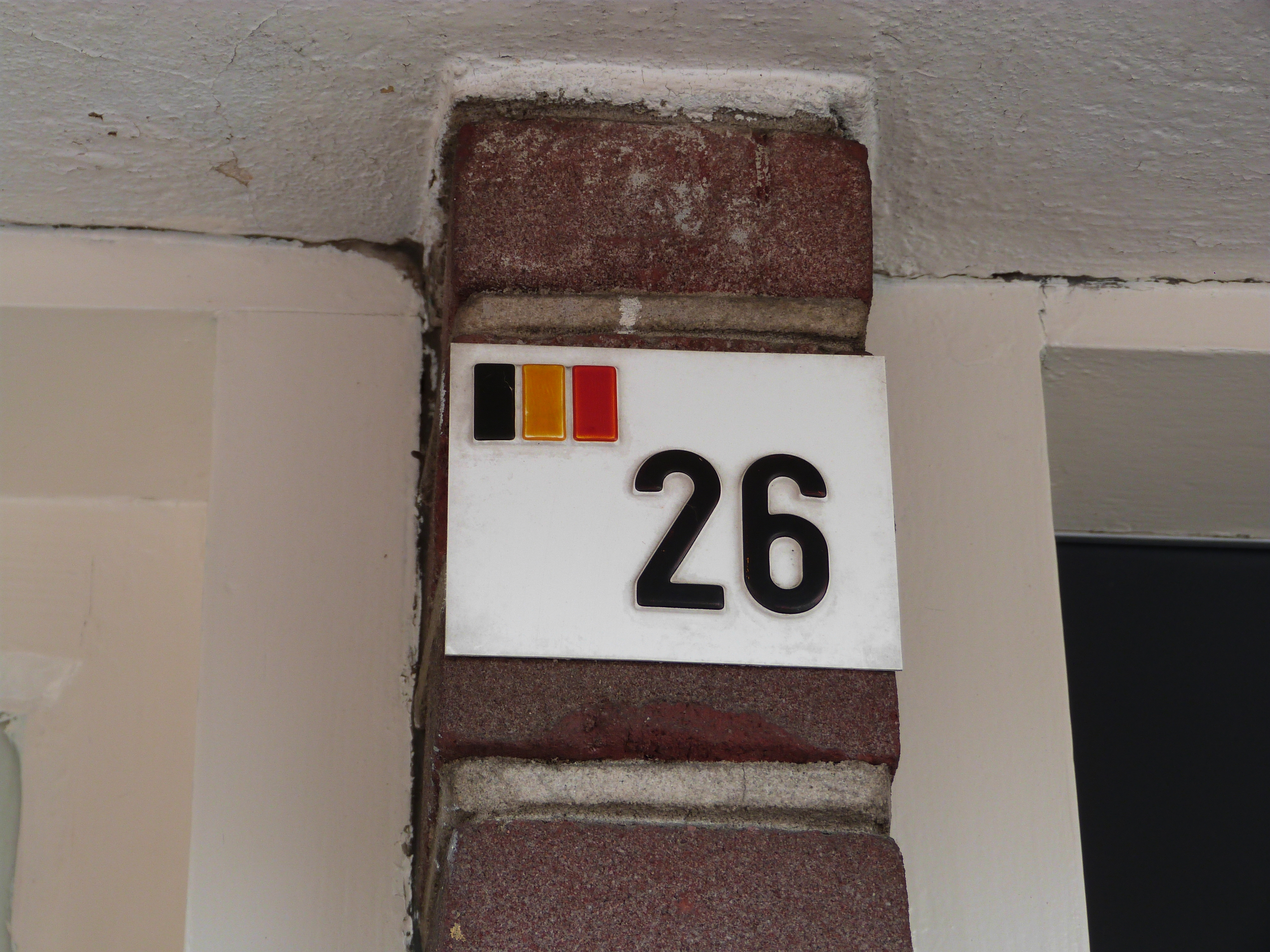
Typical house number, showing the country the house is in (Belgium)
In order to tell the difference between the two countries, borders were marked on pavements because it was necessary to show which house belonged to which country, because the residents of different houses were under different laws. (This problem is essentially solved now that both countries are members of the EU and follow largely similar laws).
Makes sense, right?
Except that in at least one case, the border passed through the front door of a house, cutting it almost down the middle – leaving the house in two different countries.
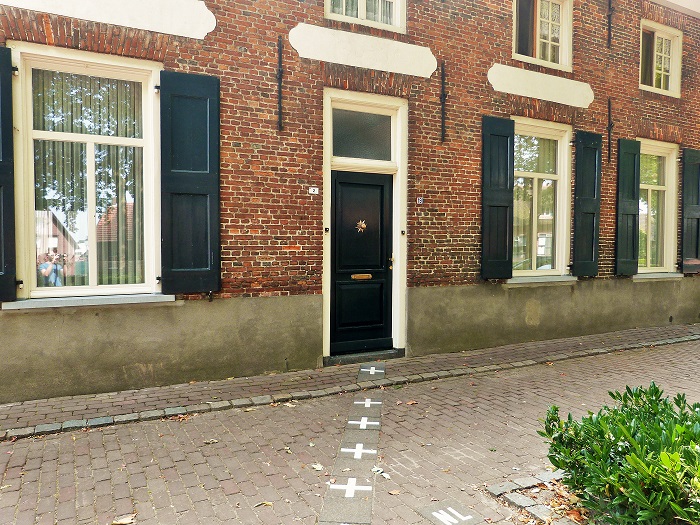
The house in two countries
The number system doesn’t quite work out how you’d expect either. Instead of numbers 1-27 on a street being Belgian and 28-40 being Dutch (cut down the middle so-to-speak), the houses were numbered completely independently from each other – as if the other country’s houses on the street simply weren’t there. This means the first 27 Dutch houses on a street are numbered 1-27. It also means the first 27 Belgian houses on the same street are also numbered 1-27, too.
So you might end up with house number 11 in Belgium situated next to house 28 in the Netherlands.
This also means that the house situated equally in both countries has two numbers: 2 (in Belgium) and 19 (in The Netherlands).
Two towns, two countries
And as if that all wasn’t weird enough, here is the icing on the cake: Baarle-Hertog and Baarle-Nassau are technically two independent towns.
Before visiting, I was under the impression ‘Baarle’ (as it’s known locally) was just one town which happened to be split across two countries and therefore had two names.
Oh no.
Baarle-Hertog has a church and Baarle-Nassau has a different church. Each town has its own town hall. And its own council. And own fire department. And so on and so on.
It is literally two towns in one. (Think the City & the City by China Mieville, if you know it). And it really is a remarkable place to visit: borders are marked out quite frequently across the town so you can hop across international borders and pose with different feet in each country – and generally look like a prat.
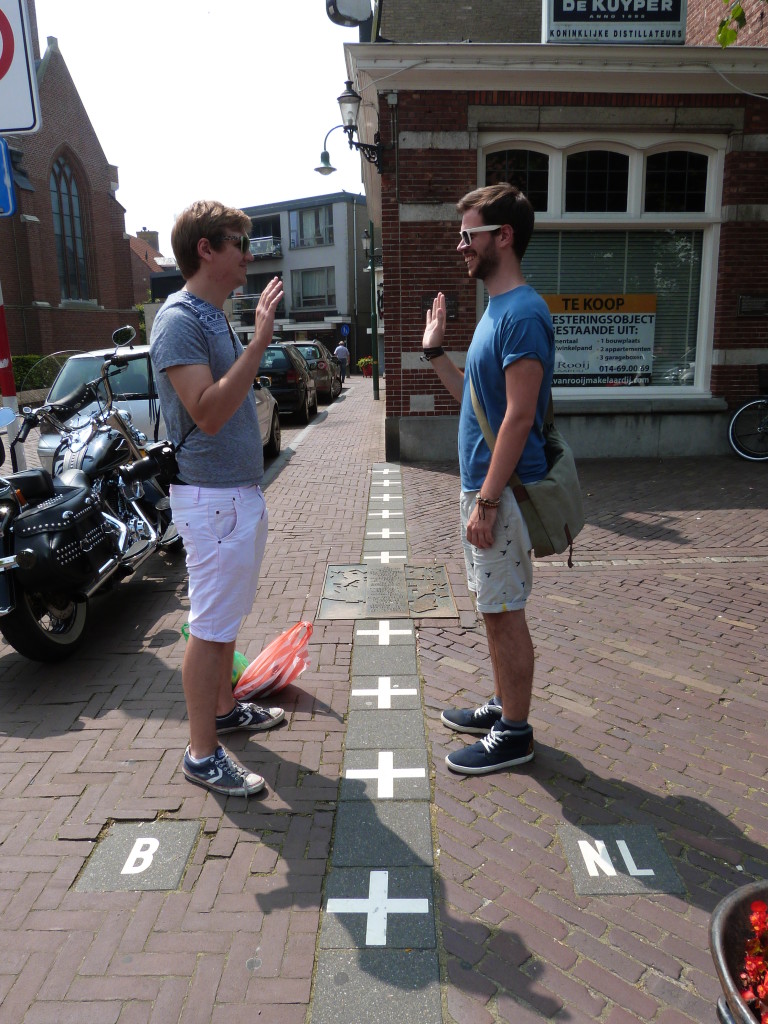
Bordering on fun (I am the prat on the right)
Baarle isn’t a tourist destination by any means, which sort of adds to the appeal. It has a modest tourist information centre, but you won’t find tacky magnets or souvenir t-shirts. Just a small provinicial town (or two), which just so happens to be one of the most intriguing in Europe.
Simple, really.



Amazing. I simply have got to visit that town. Brilliant post John.
Thanks James! It’s a little out of the way but worth it if you’re passing through.
Great story John – and great telling
Thanks Jo!
Such an interesting post. I have heard about the town (towns?) but, like you, I was under the impression it was simply split by the border. Also, I laughed quite loudly at “and generally look like a dick.” 😆
Yeah, turns out it’s a lot more complicated than that!
Haha, I have to call a spade a spade…
This is so cool, I’m surprised that more tourists haven’t heard about the town(s) yet. I’ve never been to the Netherlands to be honest and I’ve got very little experience of Germanic/Scandinavian countries. Time to do something about that.
I guess as there isn’t much to see or do there, the towns aren’t a big tourist draw.
Germanic and Scandi countries seem to have become my forte of late, haha!
I am so confused.
Haha, it’s not easy to understand…
Great page, but neither the Netherlands and Belgium are not Germanic/Scandinavian countries!